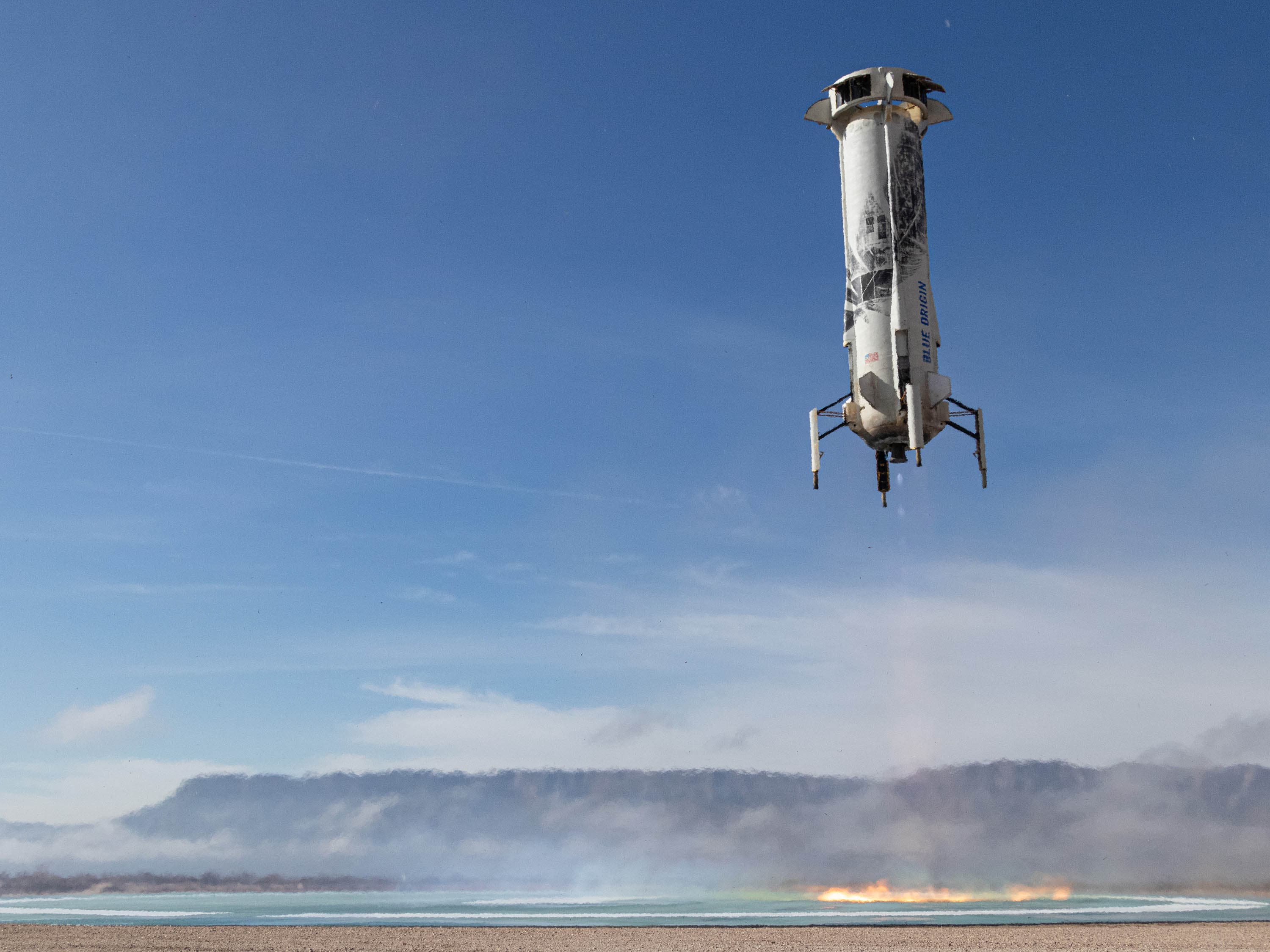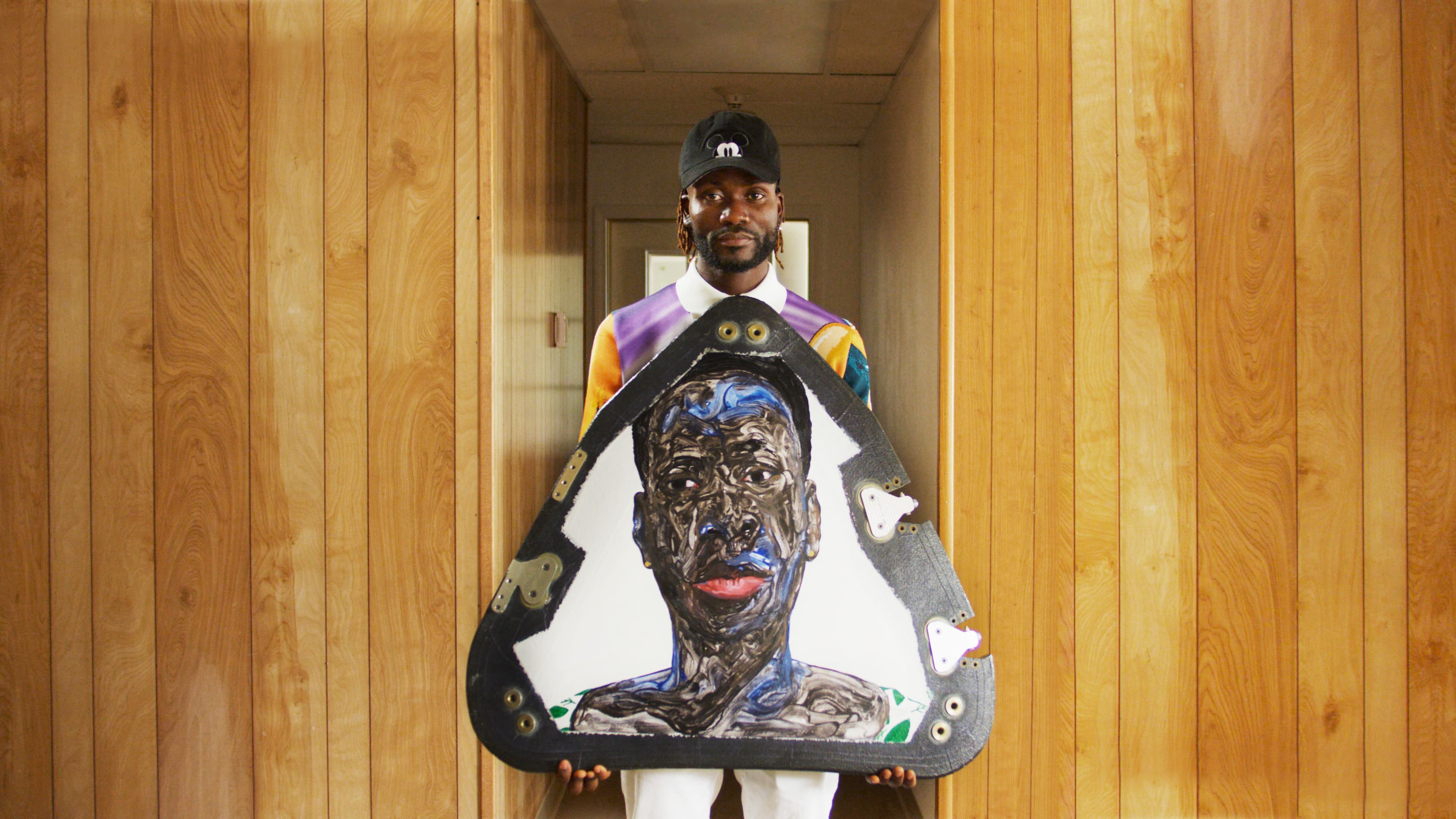
New Shepard Mission NS-17 Launch Updates
New Shepard Successfully Completes Mission with Commercial and NASA-Supported Payloads on Board
AUGUST 26, 9:45 AM CDT / 14:45 UTC
Blue Origin successfully completed the 17th New Shepard mission to space and back for the program, and the 8th consecutive flight for this particular vehicle.
Today’s flight featured payloads on board supported by NASA’s Flight Opportunities program and included a second flight of the Deorbit, Descent, and Landing (DDL) Sensor Demonstration under a NASA Tipping Point partnership. The DDL demonstration, which flew for the second time mounted on the exterior of New Shepard’s booster, tested technology designed to achieve high-accuracy landing for future Moon missions. This aims to enable long-term lunar exploration.
“After flying more than 100 payloads to space on New Shepard, today’s 8th flight of this vehicle carried NASA-sponsored and commercial experiments, including the second flight of NASA’s lunar landing technology that will one day allow us to further explore the Moon’s surface,” said Bob Smith, CEO, Blue Origin. “We are grateful to NASA for partnering with us once again on this experiment, and we are proud of the Blue Origin team for executing a great flight in support of all our customers.”
Other payload highlights included a second flight of the OSCAR Trash-to-Gas payload, which evaluated a system that helps process trash samples into useful gases; the University of Florida’s third flight of the “Biological Imaging in Support of Suborbital Science" experiment, which further tested the calibration of data collection for biological experiments; and Suborbital Triptych, a work of art by Ghanaian artist Amoako Boafo painted on three exterior panels on the crew capsule.

Key Mission Stats:
- 8th consecutive successful flight to space and back for this New Shepard vehicle.
- 18th consecutive successful crew capsule landing (every flight in program, including a pad escape test in 2012).
- The crew capsule reached an apogee of 343,787 ft above ground level (AGL) / 347,434ft mean sea level (MSL) (104.8 km AGL / 105.9 km MSL).
- The booster reached an apogee of 343,385 ft AGL / 347,032 ft MSL (104.7 km AGL / 105.8 km MSL).
- The mission elapsed time was 10 min 15 sec and the max ascent velocity was 2,232 mph / 3,592 km/h.
- The mission carried thousands of postcards from Club for the Future, Blue Origin’s foundation.
All mission crew and onsite personnel supporting this launch exercised safety measures to mitigate COVID-19 risks to themselves, customers, and surrounding communities.
If you’d like to purchase a commemorative patch of the NS-17 mission, head to the Blue Origin Shop.
-Gradatim Ferociter
August 23, 1:00 PM CDT / 18:00 UTC
New launch target for New Shepard Mission NS-17 is Thursday, August 26 at 8:35 AM CDT / 13:35 UTC.
New Shepard Payload Mission NS-17 to Fly NASA Lunar Landing Experiment and Art Installation
August 18, 12:00 PM CDT / 17:00 UTC
New Shepard’s next mission will fly a NASA lunar landing technology demonstration a second time on the exterior of the booster, 18 commercial payloads inside the crew capsule, 11 of which are NASA-supported, and an art installation on the exterior of the capsule. Liftoff is currently targeted for Wednesday, August 25, at 8:35 am CDT / 13:35 UTC from Launch Site One in West Texas. Live launch coverage begins at T-30 minutes on BlueOrigin.com.
This will be the 17th New Shepard mission to date, the 4th flight for the program in 2021, and the 8th flight for this particular vehicle, which is dedicated to flying scientific and research payloads to space and back.
To date, New Shepard has flown more than 100 payloads to space across 11 flights.
NS-17 Flight Manifest Highlights:
NASA: Deorbit, Descent, and Landing (DDL) Sensor Demonstration
Under a Tipping Point partnership with NASA’s Space Technology Mission Directorate, the NS-17 flight will further test a suite of lunar landing technologies to reduce risk and increase confidence for successful missions to the Moon. The payload will fly mounted on the exterior of the New Shepard booster. This is the second flight for this experiment.
Knowledge gained from the first flight on October 13, 2020 informed a series of critical improvements to further the capabilities of the Navigation Doppler Lidar and the Descent Landing Computer, which would work together to determine a spacecraft’s location and speed as it approaches the surface of the Moon. The technologies could allow future missions—both crewed and robotic—to target landing sites that weren’t possible during the Apollo missions, such as regions with varied terrain near craters.
The datasets derived from the first flight, including the vehicle truth data and the recorded raw payload sensor data were open sourced earlier this year on data.nasa.gov in service of broader support for U.S. interests in returning to the Moon. An additional dataset from this mission will be open sourced as well.
First Art Installation on New Shepard: Suborbital Tryptych
Unique to NS-17, New Shepard will feature Suborbital Tryptych, which is a series of three portraits by Ghanaian artist Amoako Boafo painted on the top of the crew capsule on the main chute covers. The portraits capture the artist, his mother, and a friend’s mother. The artwork is part of Uplift Aerospace’s Uplift Art Program, whose purpose is to inspire new ideas and generate dialog by making space accessible and connected to the human experience.

Carthage College: The Modal Propellant Gauging Experiment
The Modal Propellant Gauging experiment demonstrates a novel approach to measuring propellant levels in spacecraft propellant tanks in the microgravity environment of space. The payload experiment is a joint effort of the Carthage College Space Sciences program and the NASA Kennedy and Johnson Space Centers. Funding was provided by the NASA Flight Opportunities Program and by the Wisconsin Space Grant Consortium.
NASA Kennedy Space Center: The Orbital Syngas / Commodity Augmentation Reactor (OSCAR)
The Orbital Syngas / Commodity Augmentation Reactor (OSCAR) payload from NASA’s Kennedy Space Center is a reflight of a full stack experiment flown on NS-12. OSCAR aims to reuse and repurpose common spaceflight waste products by using heat and an oxygen supply stage to transform the trash into useful resources, such as water and propellant. This research seeks to improve the sustainability of future long duration human space exploration. Here is a link to a video about the OSCAR payload.
Southwest Research Institute: Liquid Acquisition Device (LAD-3)
Developed by Southwest Research Institute in San Antonio, TX, the Liquid Acquisition Device (LAD-3) demonstrates how liquid/vapor interfaces behave in microgravity. Applications include cryogenic propellant storage and management for in-space propulsion systems. Funding was provided by NASA’s Flight Opportunities Program. NS-17 will be the third flight of this payload on New Shepard, and will study bubble movement with modified hardware designs.
University of Florida: Biological Imaging in Support of Suborbital Science
Investigators Rob Ferl and Anna-Lisa Paul adapted technology designed for the International Space Station to suborbital uses with their experiment, “Biological Imaging in Support of Suborbital Science.” By further calibrating and enhancing the way data is collected, the FLEX fluorescence imaging system experiment enables increasingly precise and dynamic biological research on suborbital missions. This will be the third flight of the experiment development series on New Shepard. Funding was provided by the NASA Flight Opportunities Program.
Club for the Future
This mission will also fly thousands of postcards from Blue Origin’s foundation, Club for the Future.
Follow @BlueOrigin on Twitter for launch updates.
-Gradatim Ferociter
Share
Latest Posts
 Jan 16, 2026News
Jan 16, 2026NewsBlue Origin Announces Crew for New Shepard Mission NS-38, Slated for January 22
Blue Origin announced the crew and launch date for New Shepard Mission NS-38. Liftoff from Launch Site One in West Texas is slated for for January 22.
 Dec 20, 2025News
Dec 20, 2025NewsNew Shepard Completes 37th Mission
Blue Origin successfully launched the 37th flight of the New Shepard program. This mission marked the first time a wheelchair user has flown above the Kármán Line.
 Nov 24, 2025News
Nov 24, 2025NewsBlue Ring to Become First Fully Commercial Space Domain Awareness Mission in GEO with Optimum Technologies’ Sensor
Blue Origin announced an agreement with Optimum Technologies (OpTech) to integrate its next-generation Caracal optical payload onboard the first mission of Blue Ring.
